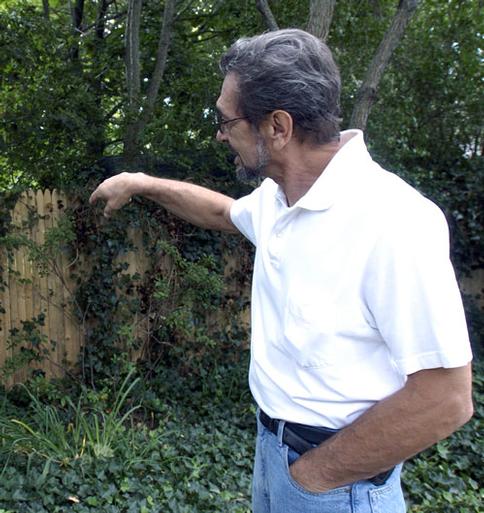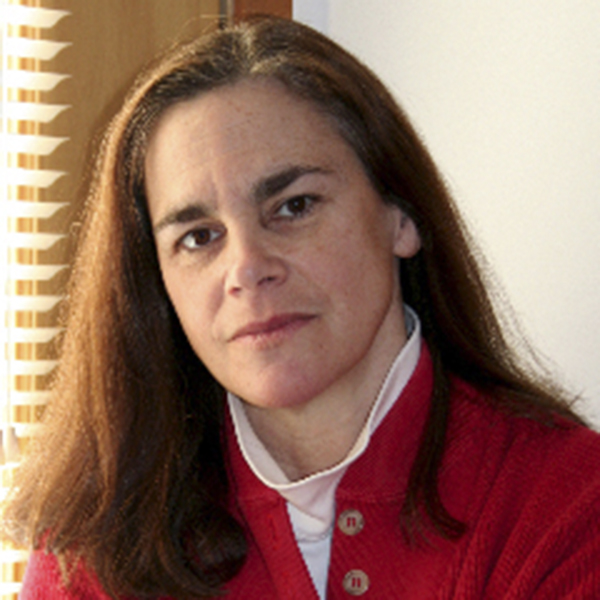

As an architect working in the high-end market on new homes and complicated renovations for more than 25 years, I knew that the physical repair of a few short sections of stockade fence on my side yard property line, which intersects two other properties, should have been a walk in the park. But a little voice in my head recalled the words of an old architecture professor who sneered, “A group project is a camel disguised as a horse.”
When I bought the property in 2006, a tiny note on my survey read, “fence in disrepair.” The surveyor also mentioned that this fence skewed my property line by 4.5 inches over three sections of fence. Upon further inspection, the aforementioned fence had been upended by the roots of an ancient linden tree located at the intersection of the three properties belonging to Harriet Abraham and her husband Kenny, Olive Evans and myself.
By the end of last winter, several sections of fence, shrouded in an overgrowth of Manhattan euonymus and ivy and battered by winter storms, had fallen onto Harriet and Kenny’s property from Olive’s side. Three sections of fence on my side had begun to resemble the leaning Tower of Pisa and clearly, their collapse was imminent.
In February, Harriet e-mailed me regarding the repair of the fence. She told me she’d like to have it repaired and that it might be more cost effective if we used the same builder to replace the sections of fence on all three properties. I agreed. She also informed me that they had previously collaborated with Olive on the pruning of the ancient linden tree, whose branches had once loomed over Harriet’s garage in predatory fashion. Although she had never met Olive, she said the joint venture was amicable with regard to the division of costs and everything had worked out well. She then mentioned a builder whose name had been suggested to her to do the work. At that point, the alarm went off and I was ready to call 911. “No way,” I announced. “He’s the pits and he butchered what should have been a nice renovation project for a lovely client of mine.” Harriet said it was only a suggestion and since I was an architect I probably should recommend builders with whom I had experience and a comfort level.
At that moment, in my mind’s eye, the fence repair had just become a time consuming, non-paying construction management job with neighbors as clients and I dreaded it. I told her I would speak to Olive who, according to Harriet, couldn’t see the fence at the rear of her property because of the foliage and may not be aware of its condition.
Olive, aware of the fence condition, wasn’t exactly sure what she wanted to do so she thought we should all meet in person and look things over. I felt a little trepidation coming from Olive, but since she had the most sections of fence to repair, it was easy to understand her cautiousness. When the three of us actually walked along our property lines it became obvious to me that the fence behind Olive’s house could possibly belong to Harriet and Kenny. My survey clearly indicated that the fence running between Harriet’s lot and mine was hers and it also ran across Olive’s property line. I asked Olive if she had a survey of her property to see where the property line was in relation to the fence. She said she’d find it and send it to me.
Meanwhile, a discussion ensued regarding whether or not we should replace the fence. What did we really need it for, after all? Maybe it should simply be dismantled? We all liked each other. Shrouded with foliage, the fence was truly innocuous, but I liked the idea of keeping it so my dogs could run around freely in the backyard. And a designer friend, who was visiting me that day, mentioned to Olive that the view would be OK now, but what would happen if the property next door was sold and someone put up something really ugly in the backyard? At that point we all decided to keep the fence in the spirit of “Good fences make good neighbors.”
I suggested that we talk to Al Masullo, an excellent Southold builder who works all over the East End. Although I hadn’t worked with him, he had shown me several local jobs and his workmanship was top-notch. And it was also very obvious that his clients liked him immensely. Lastly, unlike most builders, Al does one job at a time and gives each one his full attention. I was really hoping that he might be able to fit this in. I called and asked if he would consider doing our small job and he said the timing was perfect. I discussed the specifics of the construction and asked him to give us a price. Al suggested that should we figure out how we were going to divvy up the costs.
Meanwhile, Olive faxed her survey to me and it showed that the fence bordering Harriet’s property was hers and, to my surprise, everything bordering my property was hers as well. How could that be? Oftentimes, surveys done by different surveyors can show conflicting information. As a wave of paranoia descended over me, I called my friend, Laurie Wiltshire, at Land Planning Services in Wainscott. How do we know which survey is right? Would we have to do a lot line modification or a land transfer because of adverse possession? Would this require planning board and health department approval? Would it be considered an illegal subdivision if the new lot line (or the old one) didn’t match the tax map? “Slow down, check the lot line!” she said. After checking my deed description I plotted the lot line, which was correct on both surveys, and field measured the location of the fence in relation to the property line. The panic subsided as it was only the fence location that was incorrect and the mistake was on Olive’s survey. Neither Olive nor I was going to get into a fracas over a fence that skewed 4.5 inches across our property line.
Olive, a recently retired New York Times editor, told me that, at one point, the thought of what the fence would cost practically drove her into a mini depression. When Harriet and Olive met with Al, both of them were at ease with the notion of using him to rebuild our fences. After quite a few calls back and forth we figured on dividing the cost by the number of fence sections—two for Harriet and Kenny, three for me and six for Olive.
Installing a new fence is not rocket science, but it always amazes me how craftsmanship and solid construction are often lacking. When his bid, entitled “Three Neighbors Fence,” came in, Al had given us a fair price and we all agreed to hire him. He was going to use superior materials and real footings and gravel under the posts and any materials not used would be credited on our final bill.
On a Monday morning in early June, in 90-degree heat, Al, working alone, began the job that he said would take three days. Dismantling the fence was pretty easy since there were no existing footings and six sections had already toppled over or were leaning. Several of the old posts were still firmly attached and Al decided to reuse them instead of replacing them to save us a little money. By the afternoon Al was digging the footings. Their locations had to change, however, as our ancient linden tree had enormous roots that ran where the new footings were supposed to sit. We had a brief meeting about which way to jog the footings and fence to avoid the roots and by the end of the day Al had poured half the footings. On Tuesday he finished the rest of the footings, set the posts and began attaching the stockade sections. Rather than skew the fence even more between my property and Olive’s, Al scooped out a half circle of pickets on a short section of fence, which would have collided with another tilting tree, to allow for the fence line to run straight along our properties.
By Wednesday afternoon the fence was done. Al came back the next morning to release a support brace for a post on a cured footing while re-hanging the ivy and euonymus on Olive’s fence with a little wire and a few well-placed nails. When he finished, the plant material looked as if it had never been taken down. Our fence was as straight and true as could be and we were all thrilled with the results.
Perhaps I shouldn’t have been so worried about this joint venture where the burden of oversight fell on my shoulders because I was the best equipped to handle it. However, experiences with previous, unpleasant neighbors loomed large in my memory. A Noyac neighbor, a real wacko, once lectured me on my hedge trimming skills and threatened to have my hedge cut down if I dropped any cuttings onto her side. She also hated color and urged me not to plant anything that flowered. I told her to stop looking at my property and she’d feel better. A Sag Harbor neighbor, who was visually challenged and couldn’t read a survey, kept insisting that I was pruning her plants when they were, in fact, on my property. “I’ll call the police,” she ranted. I replied, “Make my day.”
I kept waiting for the shoe to drop but it never did.
So, imagine my delight, my total joy, when there were no border wars and our group project turned out to be a horse that giddyapped to the finish without a hitch.
I just have to keep telling myself that the Gods of cooperation have filled my little neighborhood with good karma and nice people.
Anne Surchin is an East End architect and writer.
 More Posts from Anne Surchin
More Posts from Anne Surchin